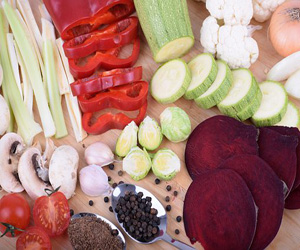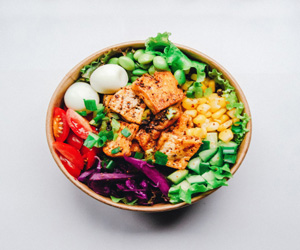


A Recipe For Health And Convenience

Meal planning is a culinary skill that has grown in importance over the years, offering numerous benefits for individuals and families. It involves preparing a strategy for what to eat, how to shop, and how to prepare your meals in advance. This proactive approach to food management not only makes life easier but also has profound implications for health, nutrition, and overall well-being.
The Basics Of Meal Planning
Meal planning is a systematic approach to deciding what to eat and when. It typically involves:
Menu Creation: You select the dishes and recipes you'd like to prepare for a set period, whether it's for a week, two weeks, or a month.
Ingredient List: Once your menu is set, you compile a list of all the ingredients you'll need for those meals.
Shopping: Armed with your ingredient list, you go shopping for the items you don't have on hand.
Preparation: You then prepare some components of your meals in advance, like chopping vegetables, marinating proteins, or cooking grains, to streamline cooking during the week.
Execution: When mealtime arrives, you follow your pre-planned menu and use the prepped ingredients to simplify the cooking process.
The Benefits Of Meal Planning
Meal planning offers a range of benefits, both for individuals and families:
Healthier Eating: Planning your meals allows you to make healthier food choices. You can include more vegetables, whole grains, and balanced proteins in your diet while reducing the temptation of unhealthy fast food or processed snacks.
Time Savings: Meal planning can save you significant time during the week. With ingredients prepped in advance, you can cook faster, and you can also reduce the number of grocery store visits.
Reduced Food Waste: Knowing exactly what you need to buy and cook minimizes food waste. You're less likely to buy items that go unused and throw out spoiled ingredients.
Cost Savings: Meal planning can be cost-effective. You're less likely to order takeout or dine out when you have a plan for meals you've already purchased.
Variety And Creativity: With a menu plan in place, you can introduce variety and creativity into your meals. You can experiment with new recipes, cooking techniques, and flavors.
Portion Control: Meal planning helps with portion control, ensuring that you prepare the right amount of food for your household, reducing overeating and leftovers.
Getting Started With Meal Planning
If you're new to meal planning, here are some tips to help you get started:
Set Realistic Goals: Start with a manageable timeframe, such as planning meals for a week. Over time, you can extend to a month if you feel comfortable.
Gather Recipes: Collect recipes you'd like to try, taking into account your dietary preferences and nutritional goals.
Create A Shopping List: Once you've selected your recipes, make a shopping list. Organize it by categories to streamline your grocery shopping.
Prep In Advance: Spend time chopping, marinating, or cooking bulk items, such as grains and proteins, in advance. Store them properly to maintain freshness.
Stay Flexible: Be flexible with your plan. Unexpected events might require you to change your menu, so always have some backup ingredients on hand.
Meal planning is a practical strategy that promotes healthier eating, time savings, and cost-efficiency. By preparing a menu, creating shopping lists, and prepping ingredients in advance, you can streamline your culinary routine and make it easier to enjoy nutritious and delicious meals. Whether you're an individual looking to eat better or a family seeking to simplify mealtime, mastering the art of meal planning can lead to a more organized and fulfilling lifestyle.




The Art Of Ingredient Substitutions
 All-Purpose Flour: If you're out of all-purpose flour and need a substitute for baking, you can use alternatives like almond flour, coconut flour, or oat flour, depending on the recipe.
All-Purpose Flour: If you're out of all-purpose flour and need a substitute for baking, you can use alternatives like almond flour, coconut flour, or oat flour, depending on the recipe.
Sugar: For a healthier alternative, you can replace refined sugar with options like honey, maple syrup, or coconut sugar.
Butter: When a recipe calls for butter, you can use alternatives like coconut oil, olive oil, or unsweetened applesauce, depending on the application.
Heavy Cream: To replace heavy cream in savory dishes, you can use ingredients like Greek yogurt, silken tofu, or a mixture of milk and butter. For desserts, coconut cream can be a suitable alternative.
Healthier Ingredient Substitutions
Ingredient substitutions aren't just about convenience; they can also be used to make your dishes healthier. For example:
White Rice: Swap white rice for brown rice, quinoa, or cauliflower rice to increase fiber content and boost nutritional value.
Mayonnaise: In salads and sandwiches, you can replace mayonnaise with Greek yogurt for a lower-fat alternative.
Breadcrumbs: Instead of breadcrumbs, you can use crushed nuts or rolled oats for a gluten-free option in recipes.
A Look At The Evolution And Impact
 Perceived Health Benefits: Some people believe that eliminating gluten from their diet can lead to improved digestion, weight loss, and increased energy. However, the scientific consensus on these claims remains inconclusive.
Perceived Health Benefits: Some people believe that eliminating gluten from their diet can lead to improved digestion, weight loss, and increased energy. However, the scientific consensus on these claims remains inconclusive.
Celebrities And Influencers: High-profile celebrities and social media influencers have helped popularize gluten-free diets by sharing their personal experiences and endorsing gluten-free products.
Growing Gluten-Free Market: The food industry has recognized the demand for gluten-free products, resulting in an expansion of gluten-free options and a significant increase in gluten-free product availability.
The Gluten-Free Food Industry
The gluten-free trend has not only influenced consumer behavior but has also significantly impacted the food industry. Gluten-free product sales have skyrocketed, leading to an influx of gluten-free alternatives in various categories, from bread and pasta to snacks and baked goods. This trend has also led to an increased demand for gluten-free labeling and certification, promoting transparency for consumers.
Harnessing The Potential Of A Plant-Based Lifestyle
 Sustainability And Environmental Impact
Sustainability And Environmental Impact
The environmental benefits of a plant-powered lifestyle are substantial. Animal agriculture is a significant contributor to greenhouse gas emissions, deforestation, and excessive water consumption. By reducing the demand for meat and dairy products, plant-powered individuals contribute to a more sustainable planet. This lifestyle choice conserves resources, reduces carbon footprints, and helps protect the world's ecosystems.
Ethical Considerations
For many, the decision to be plant-powered aligns with ethical values. Concerns about animal welfare and the ethical implications of consuming animal products have led to a growing movement in favor of plant-based living. By adopting a plant-powered lifestyle, individuals take a stand against the practices associated with factory farming, promoting more humane and compassionate treatment of animals.
Plant-Powered Culinary Creativity
Plant-powered living is far from bland or restrictive. It opens the door to a world of culinary creativity and diversity. Plant-based cooking invites you to explore a wealth of flavors, textures, and cuisines.
The Key To Stress-Free Cooking
 Why does kitchen efficiency matter? In a nutshell, it's the difference between an enjoyable cooking experience and a stressful chore.
Why does kitchen efficiency matter? In a nutshell, it's the difference between an enjoyable cooking experience and a stressful chore.
Here are a few reasons why it's worth investing in kitchen efficiency:
1. Time-Saving: In our busy lives, time is a precious commodity. An efficient kitchen allows you to prepare meals more quickly, leaving you with more time for other important aspects of your life.
2. Reduces Stress: A cluttered, disorganized kitchen can add unnecessary stress to your meal preparation. Efficiency streamlines the process, so you can enjoy cooking without frustration.
3. Promotes Healthy Eating: When your kitchen is well-organized, you're more likely to make nutritious choices. Access to fresh ingredients and efficient tools can lead to better meal planning.
A Blueprint For Healthful Eating
 Next Level: Whole Grains
Next Level: Whole Grains
Above the fruits and vegetables, whole grains take their place. These include staples like whole wheat, barley, oats, and brown rice. Whole grains are a source of complex carbohydrates and dietary fiber, providing a steady release of energy and supporting digestive health. They are also integral to Mediterranean dishes like whole wheat pasta and whole grain bread.
Healthy Fats: Olive Oil
The Mediterranean diet pyramid highlights the importance of healthy fats. At its heart is olive oil, often referred to as "liquid gold." Olive oil is the primary source of fat in this diet and is rich in monounsaturated fats, which promote heart health. It's used for cooking, dressing salads, and drizzling over dishes to enhance flavors and provide valuable health benefits.
Proteins: Legumes, Nuts, And Seeds
The next level of the pyramid includes plant-based protein sources, such as legumes (beans, lentils, and chickpeas), nuts, and seeds. These foods are rich in protein, healthy fats, and essential nutrients. They are vital for satiety and are an excellent alternative to red meat, which is consumed in moderation in the Mediterranean diet.
Dairy, Poultry, Eggs, And Seafood
Above the plant-based proteins, you'll find a section for dairy, poultry, eggs, and seafood. These are consumed in moderation, and the emphasis is on lean sources of protein like fish and poultry. Fatty fish, such as salmon and sardines, are particularly cherished for their omega-3 fatty acids, which support heart health.
A Taste Of Wholesome Goodness
 Transparency And Trust: Farm-fresh foods often come with a story. You can meet the farmers and producers, learn about their practices, and even visit the farms. This transparency fosters a sense of trust and a deeper connection to the food you eat.
Transparency And Trust: Farm-fresh foods often come with a story. You can meet the farmers and producers, learn about their practices, and even visit the farms. This transparency fosters a sense of trust and a deeper connection to the food you eat.
Support For Local Communities: By choosing farm-fresh, you are not just savoring great taste; you're also supporting local communities and economies. Small-scale farmers and producers often rely on local sales, and your patronage helps ensure their livelihood.
Environmental Impact: Farm-fresh foods typically have a smaller carbon footprint. Shorter transportation distances mean fewer emissions, contributing to a more sustainable food system.
How To Embrace Farm-Fresh Living:
Visit Local Farmers' Markets: Farmers' markets are a treasure trove of farm-fresh produce and artisanal products. They offer a chance to interact directly with the people who grow or make your food.